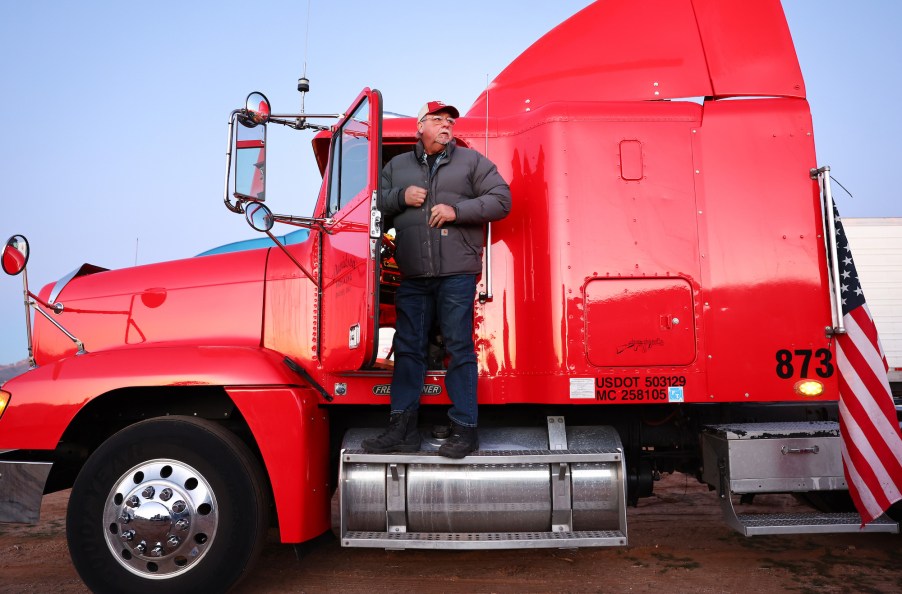
10 Things Truck Drivers Wish Other Drivers Knew
Being truckers is a difficult job. One of the things that makes the job more difficult is the lack of understanding from other motorists about what your rig is capable of doing. This lack of understanding often causes road rage and frustration for everyone involved, including the truck drivers.
Certain things are very different for larger vehicles, such as acceleration, braking, turning, and how trucks communicate with other drivers. Let’s look at ten things truck drivers wish other drivers knew.
1. What happens when cars merge in front of truck drivers in small spaces

According to DTS, truck drivers are taught to leave space in front of them. That distance is there so that if the truck has to make an abrupt stop, it can do so safely without hitting the car in front. Trucks use air brakes, which do not behave the same way as disc brakes. They need time and space to stop.
2. There is a reason it is called a blind spot for truck drivers
There are blind spots on a tractor-trailer, which include behind the trailer and next to the driver’s side door. Although mirrors can help to minimize those blind spots, they can never eliminate them altogether. A good rule of thumb here is that if you can’t see the driver’s mirrors, they can’t see you.
3. Tractor-trailers make wide right turns
Long vehicles need more room to make turns, especially right turns. When turning right, the driver must position himself at least four feet from the curb. Most trucks pull 53 ft trailers with a kingpin-to-rear-axle dimension of 39 to 47 ft. Each lane is about 12 ft wide, so they usually need three and a half lanes of total width to make a turn.
4. On-ramps and merging traffic
Truck drivers are great at looking ahead while driving. They can see you coming onto the on-ramp and determine whether you see them and if you have sufficient speed to merge safely onto the interstate.
Most truck drivers will change lanes to allow cars to merge from the on-ramp. However, that isn’t always possible. One thing drivers need to remember is that they do not have the right of way at an on-ramp.
5. The three-lane drive trick is dangerous
If you missed an exit and cut over three lanes to get to it, you have made this dangerous maneuver. However, if you do this around a truck, you can’t see what is on the other side and create an even more dangerous situation.
6. Truck drivers communicate with their lights
Truckers use their lights to communicate with other motorists. More than two headlight flashes for oncoming trucks mean danger ahead, and you should proceed cautiously. Truckers will flash their headlights to indicate that the lane is clear to change lanes. They will also use their hazard lights when there is about to be an abrupt stop ahead in traffic.
7. The negative stigma attached to trucker drivers
People often have an idea that truckers are somehow less intelligent than most. In fact, truck drivers know more about driving than most motorists because it is their job. They do this every day for hours. You could learn a thing or two from most truck drivers, so pay attention.
8. Stopping a truck takes time
Trucks have a lot of mass and take more time to stop. Darting in front of a truck and slamming on your brakes will hurt you more than them, so just don’t do it.
9. Trucks take time to accelerate
Trucks are pulling thousands of pounds, and it takes a while to get that much weight moving. Since large trucks often have lower gears, it takes time to get up to speed, especially when going uphill.
10. Backing a truck takes time
Trucks can be 60 feet or longer, so backing such a long vehicle takes time. Keep in mind there is also a pivot point at the kingpin, so the driver sometimes has to make several corrections to get the angle correct.
Trucks are large vehicles that don’t behave like your car. Please remember that they need extra room and time, so be courteous to truck drivers as they are doing their jobs.


